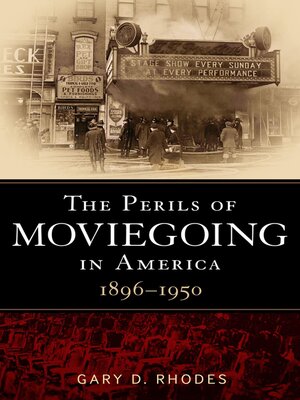
Sign up to save your library
With an OverDrive account, you can save your favorite libraries for at-a-glance information about availability. Find out more about OverDrive accounts.
Find this title in Libby, the library reading app by OverDrive.



Search for a digital library with this title
Title found at these libraries:
| Loading... |
Audiences also confronted an array of perceived moral dangers. Blue Laws prohibited Sunday film screenings, though theatres ignored them in many areas, sometimes resulting in the arrests of entire audiences. Movie theatre lotteries became another problem, condemned by politicians and clergymen throughout America for being immoral gambling.
The Perils of Moviegoing in America: 1896-1950 provides the first history of the many threats that faced film audiences, threats which claimed hundreds, if not thousands, of lives.






